Sharlyn J. Lauby's Blog, page 85
March 24, 2020
Improve the Employee Experience by Providing Answers

(Editor’s Note: Today’s post is brought to you by our friends at Paycom, a
leading provider of cloud-based human capital management software. For the
seventh consecutive year, Paycom
was named a top workplace in Oklahoma. Congrats to them! Enjoy
the article.)
Last month, I
wrote an article titled “5
Ways Strategic HR Can Bring Business Value”. Number four on the list was for HR to support customer-friendly
policies. In the article, we talked about having company policies that help
employees take care of the customer (versus creating roadblocks to better
customer service).
But we can also view having customer-friendly policies as giving an employee experience that mirrors the customer experience. For example, some of you might know that Mr. Bartender and I recently moved, so we’re updating our address everywhere. Most of the time, I can update my address online. It’s easy to do, I can do it at my convenience, and I know it’s done right.
With self-service
technology, employees can do the same thing. They save time by updating their
own addresses. Not only does it save a trip to HR, but it saves duplicate key
entry, and the possibility of the address being entered incorrectly.
Now, I don’t
want to get too far off on a tangent, but I think technologies like employee
self-service promote autonomy. They encourage people to take responsibility for
their actions. And we know from books like Dan Pink’s “Drive: The
Surprising Truth About What Motivates Us” that autonomy is one of the three things that leads to
better organizational performance. (P.S. The other two are purpose and
mastery.)
Paycom’s Ask Here™ Allows Employees to Get Answers
In addition
to updating my own address, another experience I’m starting to use more
frequently as a consumer is the ”Contact Us” section of websites. Of course,
before you directly contact the customer service department, many organizations
have a section where you can find you own answer. It’s super convenient and can
often save you a phone call or email.
Paycom
recently introduced something similar for employees called Ask Here. It’s accessible
through both desktop computers and mobile devices. The goal of Ask Here is to
connect employees with the right answers, the first time. I was curious to see
how Ask Here works, so I recently requested to demo the service. And I must
say, it’s designed to mirror the customer service experience we’re all very
accustomed to.
Ask Here
works with Paycom’s Employee Self-Service® tool, which acts as a first avenue
to see if the question has already been answered. As HR pros, we know there’s a
good chance that another employee might have wanted to know the same thing.
If the
question hasn’t been answered previously, then the employee can ask the
question. They don’t need to figure out who is the best person to ask. They
just ask the question. The system will provide an automated reply (so the
employee knows their request is in process).
Meanwhile,
the system will immediately route the question to the right person. A few common
departments that receive questions are human resources, payroll, and facilities.
Paycom told me during the demo that they’ve found organizations are also setting
up a third point of contact for atypical or unique questions, so they are read
and given appropriate attention.
When it comes
to providing answers, the system can prioritize urgent requests (which is
helpful). It also allows for standard replies, making the response easier (and
faster) for the person replying. And the app is secure, so it’s safe for the employee
or department to send or reply with confidential information. Once a response
is issued, the employee can receive the response directly within the app, via a
push notification on their phone, or by notification sent via email.
Giving Employees Answers Gets Results
Another thing
I wanted to know about Ask Here was what it’s done for organizations in terms
of results. For employees, they get answers. And they get them in a timely
fashion. Let’s face it: Employees aren’t asking their questions to quiz human
resources departments. They have a legitimate reason they need that
information. When employees receive good information in a timely fashion, it improves
the employee experience, which benefits employee retention.
There’s also
a benefit to HR in terms of a decrease in foot traffic. As an HR professional,
let me go on the record that no one should implement a technology solution to
avoid chatting with employees. But in my experience, I’ve always wanted to meet
with employees about the important stuff. Paycom’s Ask Here allows HR to spend
their time with employees on the important stuff.
The final
outcome benefits the entire organization: Emails decreased. No one wants more
email. I ran across this Inc. article that said the
average worker spends 23% of their time on emails. That’s two hours a day, almost 10 hours a week, about 40
hours a month, and approximately 480 hours a year (480 hours a year = 60
workdays). Ridiculous. Any reduction in email is a good thing. Enough said.

There’s one more
thing. Ask Here allows organizations to measure the number of inquiries, types
of requests and response times. Gathering and analyzing this information can
only help the solution become stronger, which means that the employee
experience can become stronger. For example, if the company notices they are
getting a lot of certain types of requests, then maybe they want to create an FAQ
to help provide immediate answers. Or if response times start to creep up, they
can put a plan in place to have more people start answering questions. It might
help formulate a communication strategy around common inquiries.
HR
departments have the opportunity to take a cue from their marketing
counterparts and create employee experiences that resemble the customer
experience. And the good news is most employees are customers (somewhere), so
the adoption rate should be significant, which brings immediate value to
everyone involved.
If you want to learn more about how workplace communications
and Ask Here can benefit the business, check
out this episode of Paycom’s HR BreakRoom featuring Shark Tank’s Barbara
Corcoran.
The post Improve the Employee Experience by Providing Answers appeared first on hr bartender.






March 22, 2020
The ART of Effective Goal Setting
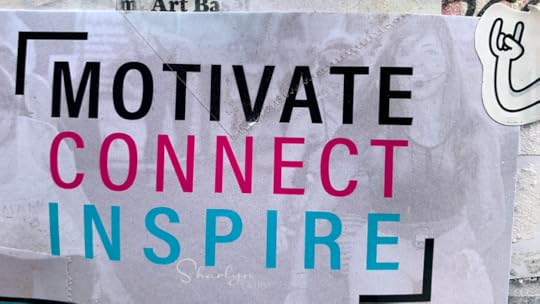
Regular readers of HR Bartender know I’m a fan of SMART
goal setting. SMART is an acronym for specific, measurable, actionable,
responsible, and time bound. I think it’s a very flexible model and can be used
for multiple activities – everything from operational plans to meeting minutes
to individual goals.
Last year, at Saba
Software’s Insight Conference, I learned a new way to use SMART. And that’s
to write it backwards. Yep, turn SMART into TRAMS. While the letters still
represent the same concepts, it does allow us to approach goal setting a little
differently.
Time bound. When do we need
to have something done? Meaning, what’s our deadline? Often a deadline drives what
actions the organization is able to take.
Responsible. Who needs to be
involved? Those people need to be in the room during the decision making and
goal setting process.
Actionable. What are we
trying to accomplish? In addition, this is an opportunity for the organization
to ensure that the team has the knowledge, skills, and abilities to get the job
done.
Measurable. What’s the
expected outcome? Then, the organization should define how they will measure
the outcome and where the data will come from.
Specific. Is the goal easy
to understand? Everyone on the team needs to be able to talk about the goal and
how it will be accomplished.
When I use the traditional SMART model, I think of it as a goal
setting guide. Specific – What do we want to do? Measurable – How will we know
when we get there? Actionable – What are the steps or actions we need to take? Responsible
– Who will do them? And time bound – When will it be done? SMART goes from high
level ideas to the nitty gritty details.
With TRAMS, it feels more like goal achievement. Time bound
– When do we want to see results? Responsible – Who’s on the team? Actionable –
What are we going to do? Measurable – What outcomes are we hoping for? And
specific – Can everyone understand it? TRAMS takes the conversation from
details to a plan of action.
Depending on your situation, both SMART and TRAMS can be
good. Now more than ever, organizations and individuals are going to want a
proven goal setting model to help them stay focused. This approach allows
users to take a model they already know and flex it to meet their specific
needs.
Right now, employees might be trying to adjust to a new
normal, such
as working from home. These changes do take some getting used to. But at
some point, employees will want to focus on being productive because it feels
good to get stuff done. That’s where goal setting comes in.
Organizations and managers have a goal of helping and supporting their employees. Part of that includes giving them tools – like SMART and TRAMS. Not only will it help employees work though temporary and short-term changes, but it will help them accomplish the organization’s big long-term projects.
Image captured by Sharlyn Lauby while exploring the Wynwood Arts District in Miami, FL
The post The ART of Effective Goal Setting appeared first on hr bartender.






March 19, 2020
Bookmark This! Working From Home Edition
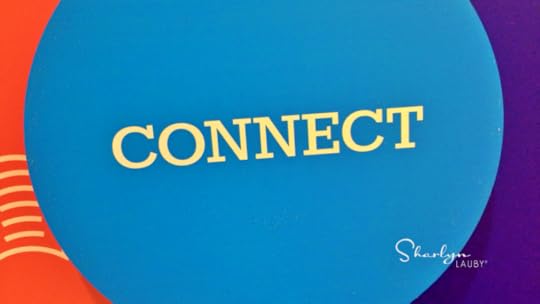
Given what’s currently happening with COVID-19, many
employers suggest mandating that their employees work from home (if able). It
only makes sense. Employers are trying to help employees minimize their social
interactions with others.
But if your organization doesn’t have a work from home
policy in place, it can be a big deal. And many HR pros are having to create
this new normal quickly – and, on the fly.
I’ve mentioned before how, when I was researching becoming a
consultant, I spoke with consultants about the pros and cons of consulting
life. One person said to me that working from home was the biggest challenge
they faced. I heard from several consultants that they went back to corporate
jobs because they were lonely when working at home.
I’ve been working from home for well over a decade now and
love it. But it wasn’t always that way. When I first started, I would get up,
put a suit on, and work because I was so afraid of being distracted. And I was
making myself miserable. One day, I had an intervention with myself and created
some work at home rules which allowed me to stay productive and enjoy the perks
of working at home.
If you’re currently faced with (unexpectedly) working from
home, here are some articles that might help.
The
Pros and Cons of Working from Home
Working from home may be the top goal of many workers. Here
are several tips and resources discussing the pros and cons of working from
home.
6
Tips for Successfully Working at Home
For many, working at home is a dream. But there can be a lot
of challenges too. Here are a few tips to help you successfully work from home.
We need to listen and listen well, especially when
we’re working remotely. Poor listening impacts our ability to receive
information and this can hurt our concentration levels.
8
Ways to Better Your Everyday Communication
When we work remotely, our co-workers don’t get the benefit
of seeing us. For effective communication, match the method
to the message. Think about the message you’re trying to
convey, then decide the best way to communicate it.
7 Things Every
Email You Send Should Have
Email becomes a primary communication tool when you’re
working remotely. Here are seven components to sending an effective email that
will get a good response.
The 5 Rules
of Texting Etiquette
Texting is a common form of communication. Here
are 5 common-sense rules to consider when texting. They
include, ask for permission, be brief and more.
I wish I could tell you that there’s a secret formula to
working from home. Unfortunately, it’s a lot of trial and error to determine
what works for you. But if I could offer one suggestion, it would be: try to
mirror your work arrangement.
You don’t have to wear a suit but working in your pajamas
all day might not help you be your most productive. Unless you snack all day at
work, try to follow good nutrition habits. Same goes for watching TV or
listening to podcasts or music while you work. Finally, practice good
ergonomics. Your body will thank you and you’ll get more done.
I know working from home can be challenging. Especially if you didn’t ask to do it. But you can make this work. Let me know if you have any working from home questions and I’ll try to answer them! If you found something that works amazingly well, share them in the comments. It just might be the solution someone else is looking for!
The post Bookmark This! Working From Home Edition appeared first on hr bartender.






March 17, 2020
Managers Must Know How to Manage the External Workforce
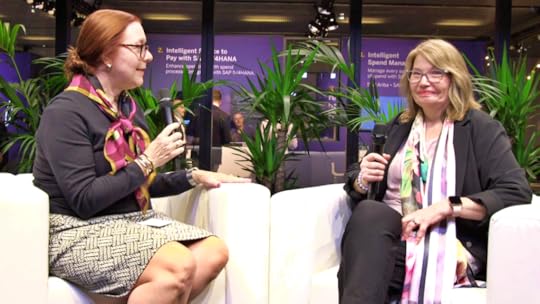
We’ve spoken before about the concept of “buy,
build, and borrow” as a recruiting strategy. “Buy” means hiring
employees from the outside. “Build” means developing talent from within the organization.
And “borrow” is focused on hiring freelancers, contractors, and external service
providers (i.e. the external workforce).
For organizations to be successful in the talent space, they
need to do all three. More specifically, they need to be very clear on when and
how they will borrow. The SAP
Fieldglass report “Services
Procurement Insights 2019: The Big Reveal” shows that the external workforce represents 42% of total
workforce spend. Organizations are using an external workforce to help them to
bridge the skills gap and maintain their business competitiveness. In fact, most
executives (59%) say the external workforce helps them compete in a digital
world.
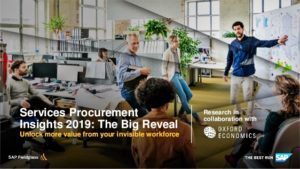
2 Ways for Organizations to Utilize External Service
Providers
Organizations need to manage all of their resources well.
But because the resources dedicated to the external workforce are significant,
it’s even more important to understand the best ways to utilize external
service providers. Here are two common ways for organizations to use the
external workforce:
Project-based
This is probably the most common way organizations use an
external workforce. When they need something done, instead of hiring a regular
full-time employee, they bring in a contractor or external services provider to
handle the task. When the task is complete, the contractor or external services
provider is finished with the assignment.
Readers of this blog know I’m a fan of the Marvel
Cinematic Universe (aka MCU). A project-based use of an external
service provider would be like Captain Marvel. She shows up when you need her.
Otherwise, she’s out saving another universe.
Extension of the department
This one isn’t as straightforward as the project-based
scenario. The company needs a task done on a regular basis. It might be
tempting to mash up a few tasks that need completing, call it a “job”, and hire
a regular full-time person.
But here’s the challenge. That mash up tasks isn’t really a
“job”. And we all know it. As HR pros, we need to design jobs that provide
meaningful work that people want to do. That they feel some sense of purpose
and connection. When jobs are designed poorly, employees will not feel connected
to the organization. And they’ll leave.
So, that task that needs to be completed on a regular basis
is perfect for an external service provider as they are looking for
project-based work rather than a career path within an organization.
In the MCU, this would be like Falcon. When the Avengers
need his skills, he “swoops” in to help the team. Sorry, couldn’t resist the
bad pun. Which if you’ve been watching the Avengers movies, Falcon seems to help
out a lot. And I don’t want to give away any spoilers, but it’s also possible
that what starts out as the perfect freelancing gig could end up being a more
regular role.
Regardless of
whether the company hires a Captain Marvel or a Falcon, managers need to make
sure their organizations are appealing workplaces for external workers. This is
also true during assignments. Contingent workers along with external service
providers want to stay engaged. The idea being that if Falcon and Captain
Marvel feel positively about a company and the work they are doing, then when
they get the call, they will make the company’s needs a priority.

The
Manager’s Role in Engaging the External Workforce
Just like managers are a big part of keeping regular
full-time employees engaged, they’re a big part of keeping external service
providers engaged. Here are 4 activities that managers can do to keep the
external workforce engaged with the organization:
UNDERSTAND the company’s external workforce engagement philosophy. This means that managers should understand how to best leverage contractors and external services providers – as well as supply chain technologies – to get projects done.
KNOW and actively manage the external worker’s agreement in terms of expectations, deliverables, time, fees, etc.
MONITOR the work products that external service providers deliver for value, timeliness, reworks, etc.
UTILIZE the contractor or external service provider cross-departmentally for greater collaboration since they know the organization. This might also get the organization better rates.
As the talent market continues to challenge us,
organizations need to look at the external workforce to get things done. But managers
must be prepared to invest in helping the external workforce feel connected to
the organization.
To learn more about how your organization can more effectively manage the external workforce, download the SAP Fieldglass report that I mentioned above and check out this video conversation I had at SAP Ariba LIVE in Barcelona with Molly Spatara, global vice president of brand experience for SAP Ariba and SAP Fieldglass.
The post Managers Must Know How to Manage the External Workforce appeared first on hr bartender.






March 15, 2020
How Organizations Can Address Email Fatigue
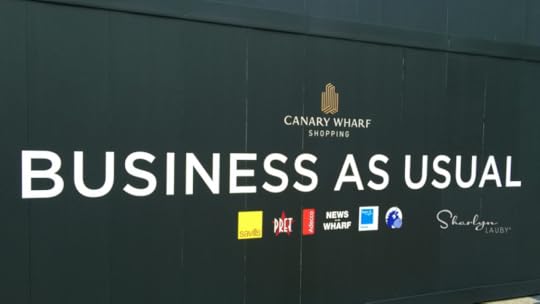
I ran across this article from CNBC on how many hours Americans spend on email each day. It’s an interesting read. The article says that we spend 209 minutes a day checking work email and 143 on personal messages for a total of 352 minutes. That translates to roughly 5 hours and 52 minutes each day (almost 6 hours a day).
I have a couple of takeaways from this.
If employees only answer work emails at work, then they’re
spending a little over 3 hours a day on work email. In a typical 8-hour day,
that means employees only have 5 hours left to be productive. Of course, that’s
saying that none of the 5 hours is spent in life draining meetings. I’m being a
bit sarcastic there, but you get the point.
It also means that work emails could potentially be lost in the noise. Employees might glance over a subject line and delete it thinking that the message isn’t important. Or open a message and not take the time to read the entire thread before responding. And who can blame them? Many employees aren’t told during the interview process about how much time they will spend answering emails.
I do understand that there could be such a thing as “productive email”. Some messages are necessary and helpful. The question becomes how much is the right amount of email. My guess is, if I asked most employees if they get too much unproductive email, I would get a resounding “yes”. So, we need to make sure that we do things to reduce the amount of unproductive messages and potential email fatigue. Here are a few things to consider:
Match the message to the medium. Some messages are better sent in person and others are okay via email. Organizations need to ensure that messages are sent the right way. I’ve seen way too many times an organization send a company-wide email because it’s easy on them and then wonder why no one read it.
Find alternative technologies that will send messages. While email is still a significant business communications tool, there are some others that have emerged – texting, collaborative platforms like Slack, and apps like Workplace from Facebook. Each of these has pros and cons that could be worth investigating. But the end result could be time savings.
Set a good example. If you want employees to send good productive messages, then it starts with senior management. I once worked for a company that had “email guidelines”. At the time, I thought it was hilarious but maybe they were doing the right thing by formally setting expectations.
Hold people accountable for following good email etiquette. I know no manager wants to counsel an employee about “reply all” messages but it’s a huge frustration and it could limit an employee’s effectiveness. Think about ways to coach employees on the right way to send email.
I hate to admit it, these things aren’t new. But they work. And we often forget that. The answer doesn’t have to be an email training program or email disciplinary action. It does need to be a conversation about “How do we communicate more effectively?” Because the better we communicate, the less time employees will spend on email and the more time they will focus on productivity.
Image captured by Sharlyn Lauby after speaking at the HR Change & Transformation Conference in London, England
The post How Organizations Can Address Email Fatigue appeared first on hr bartender.






March 12, 2020
Encourage Learning After Personal Setbacks and Failures
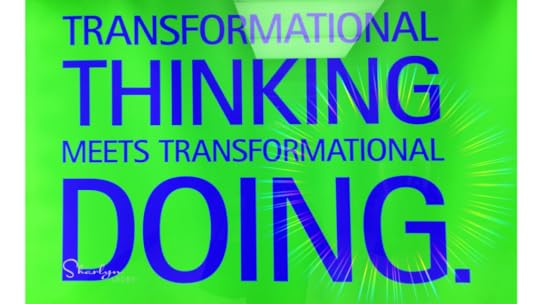
Years ago, I had the chance to hear Sara Blakely speak about starting her
company, Spanx. If you ever get the opportunity to hear the story, I would
strongly suggest it. My takeaway is that her journey is less about shapewear
and more about how to turn setbacks and failures into something positive and
productive.
One of the things that Blakely told the group was that her
father encouraged failure. At the end of the day, over dinner, he would ask,
“What did you fail at today?”
I was reminded of Blakely’s story at last year’s SAP
SuccessFactors Conference in London. A panel of speakers were talking about
their setbacks. Their stories involved major illnesses and accidents that
caused them to put their personal and professional plans on hold for a while. One
aspect was, when they were ready to resume their plans, they also had to ask
themselves if that original plan was the thing they really wanted to do.
I know firsthand the importance of recalibrating after a
setback. Depending on the type of setback or failure, it can change lives and careers.
Many of you know that twenty-four days after Mr. Bartender and I were married,
we were in a car accident. I
spent the first year of my married life in a full-body cast. Events like
that change you. But they don’t have to stop you.
Which brings me back to the SuccessFactors panel. Is it
possible to harness the lessons learned during our times of challenge, setback,
or failure into something productive?
I believe on an individual level; the answer is yes. But what
about on a professional level? Is it possible for organizations to provide
support and encouragement to employees who are experiencing setbacks, so their
professional life continues to flourish as well? If organizations tell
employees to leave their personal lives at the door, then employees might miss
out on those breakthroughs.
Here are two things to consider:
Create safe zones. On an individual level, maybe it makes some sense to build a personal board of advisors to help navigate through the tough times. On an organizational level, encourage employees to build internal and external networks. Not only can these groups help employees during challenging times, but they are valuable every single day of the year. Encourage ‘nudging’. I’ve been fascinated by a concept called nudge theory which says that positive reinforcement and indirect suggestions can influence behavior. For example, is it possible that giving a friend or acquaintance a Facebook “like” or an Instagram “heart” provides the little push someone needs to keep going? Support doesn’t always have to be a face-to-face meeting or a long phone call.
While I wish everyone all the success in the world, the reality is that we will all experience setbacks and failures along the way. Hopefully, they’re small ones that we can bounce back quickly from. But whether they’re big or small, there can be lessons learned. The question becomes are we taking the time to reflect, recalibrate, and refocus our thoughts and feelings to move forward.
Image captured by Sharlyn Lauby after speaking at the HR Change & Transformation Conference in London, England
The post Encourage Learning After Personal Setbacks and Failures appeared first on hr bartender.






March 10, 2020
Want to Hire a Great HR Professional? Go To an HR Website
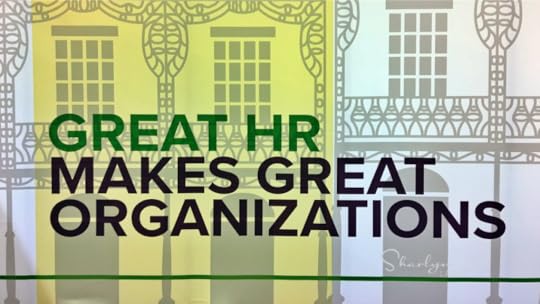
(Editor’s Note: Today’s post is brought to you by our friends at the Society for Human Resource Management (SHRM). With over 300,000 HR and business executive members, SHRM creates better workplaces where employers and employees thrive together. Check out the SHRM HR Jobs booth at SHRM Talent Conference and Exposition on April 20 – 22, 2020 in Orlando, Florida. Enjoy the article!)
Regular readers of HR Bartender know that I facilitate the SHRM seminar Talent Acquisition: Creating Your Organization’s Strategy. One of the things we discuss during the seminar is building candidate personas as a way to source open positions. I always find this is a terrific opportunity to ask the group, “When you’re looking for an HR professional, where do you go?” Of course, many of them always say “SHRM.”
It totally makes sense. If you
want to find an HR professional, go to an HR website. And if you’re an HR
professional looking for a new human resources job, go to an HR website.
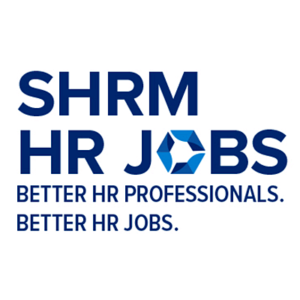
That’s why I wanted to tell you about the SHRM HR Jobs portal. The site has been recently revamped, and it focuses on two things: 1) Organizations can post their Human Resources job openings. 2) HR professionals can post their resume (for FREE). Let’s talk a little about each. Oh, and before you say, “I’m not a SHRM member so this really doesn’t apply to me.”, you don’t have to be a SHRM member to post jobs or search for opportunities. So, read on…
Features For Employers Looking To Hire HR Talent
Organizations can post their
openings on the site. There is a cost depending on how much exposure you want
the job posting to get and if you would like it distributed via email to HR
professionals looking for a new opportunity. Honestly, that’s no different than
any other job board. All job postings are for 30 days so the cost doesn’t
affect timing.
As individuals express a desire
in your company and/or your openings, you can keep track of them in the “My
Candidates” section. And you can also use the “My Templates” section to create
pre-screening questions and response letters.
Even if you don’t have any
openings right now, at least take a moment to set up a company profile. It’s FREE
and a great way to let people know about your company. Don’t miss out on some
no-cost employment branding.
Features For HR Professionals Looking For New Opportunities
If you’re wondering what types of
HR opportunities are being posted (because I was), I did a few searches and
found a wide range of human resources jobs – everything from coordinator to
vice president. Both specialists and generalists. In smaller cities as well as
larger ones.
The site also allows an individual
to set up job alerts. So, you don’t have to regularly visit the SHRM site to
see if there’s an opening you might be interested in. You can set up a job
alert for that super cool dream job and when it gets posted, you’ll
automatically know about it.
Regardless of whether you’re
looking for a new HR opportunity right now, it might be worth your time to
post a public resume. Think of it similar to a LinkedIn profile, but it
resides on your professional association’s website. Employers would be able to
search for it. (P.S. You can also upload a private resume that you could keep
on hand to send to interesting leads.)
Finally, the site has a job
search resource center. Please don’t take this the wrong way but sometimes as
human resources professionals, we’re great at telling others how to find a new
opportunity but we’re not so great when it comes to doing it ourselves. This
area will give you job search reminders to help your resume stand out.
Check Out the SHRM HR Jobs Portal
The basic tenet of recruitment marketing is to “go where the candidates are”. That’s the reason I found the HR Jobs section of the SHRM website so important. When we’re looking for HR professionals, it only makes sense to go to an HR website. I’ve got nothing against LinkedIn or Indeed, but they’re not human resources specific. It only makes sense to post openings (or your resume) where HR professionals are.
Also remember, if you’re looking
for HR professionals who have certifications, SHRM’s HR Jobs might have more of
them. Here’s my logic: If I’m a certified HR pro or a SHRM volunteer leader or
a SHRM Government Affairs A-Team member, chances are I’m more connected to the
organization and my profession. I’m not saying that there aren’t qualified HR
pros who aren’t members of SHRM or connected to the profession. What I’m saying
is that if you’re an organization looking for an HR pro, then going directly to
an HR organization is a way to gain exposure to more of them.
If you want to learn more about
the SHRM HR Jobs
portal, just go check it out on the
SHRM website – it’s easy to remember shrm.org/hrjobs. You can view all of the
things I mentioned with your SHRM login, no extra sign up required. In fact,
you can search open jobs without a SHRM account or even a resume. There’s a
web demo for Job Seekers available on
the SHRM site and a
web demo for Employers coming up on Thursday, March 19, 2020 at 2p Eastern.
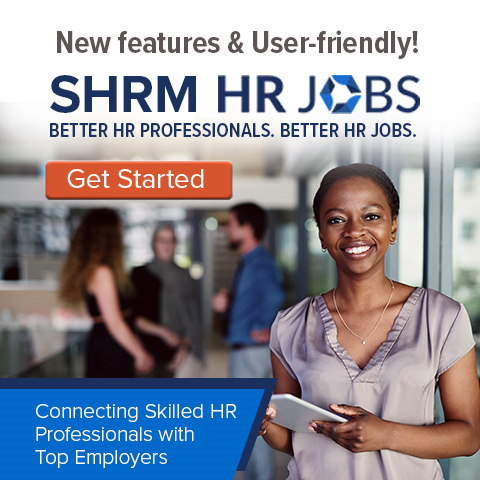
Oh, and P.S. SHRM HR Jobs has a Twitter account and a LinkedIn
account so you can follow the action on
social media.
The post Want to Hire a Great HR Professional? Go To an HR Website appeared first on hr bartender.






March 8, 2020
Everything HR Needs to Know About Geofencing
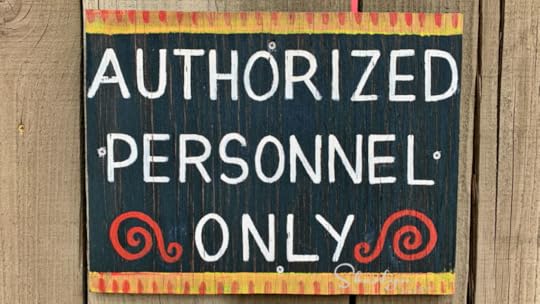
A
couple of years ago, I was invited to attend the TAtech Conference. TAtech
is a trade association for organizations that provide technology-based recruiting
tools. It’s a great event and I really learned a lot. One of the concepts that
the group was very focused on was geofencing.
According to a
report from MarketsandMarkets, the geofencing industry is expected to grow over 27% by
2022, citing “technological advancements in use of spatial data and increasing
applications in numerous industry verticals.” While all of this isn’t focused specifically
on recruitment marketing, it does send the message that geofencing isn’t going
away any time soon.
What is geofencing?
In
the article “What is
Geofencing and How Can You Use It to Attract Qualified Applicants?”,
the author describes geofencing as “the practice of providing specific content
to individuals based on their physical location, as determined by either their internet
protocol address (i.e. IP address) or a function of their mobile device, such
as radio-frequency identification (also known as RFID). The physical location
can be as specific as an organization, or as broad as a zip code, state, or
country. How broad you set the parameters depends on your particular goals, and
where research shows your target demographic is located.”
So geofencing is about using technology to send a targeted
message to a specific location. Think of it as putting a fence around a
location and only sending your message to the individuals within the fence.
An example of geofencing
would be if you’re trying to find talent acquisition professionals. You know there’s
a big HR conference coming up in San Diego. Geofencing would be
identifying (i.e. creating a fence) around the location of the conference (San
Diego) and then planning to send messages to HR pros who are in the “fence” during
the conference timeframe.
How does geotargeting differ from geofencing?
In
the same article, geotargeting is defined as “adding the additional capabilities of
being able to deliver ads not only to people within a specific geographic area,
but also people who meet certain criteria, like behaviors, interests, and
demographics.”
Using our previous
example, geotargeting would be identifying the HR pros at that big conference
in San Diego who have talent acquisition experience and specifically sending
messages to them instead of all of the HR pros. The key to using both
geofencing and geotargeting successfully is understanding your audience. The
more you can identify the ideal candidate, the better you can target your
messaging.
Give me some more
examples of how to use geofencing for recruitment.
Okay, let’s say you’re
at a career fair. You want to get in front of as many qualified candidates as
you can. One thing that can help bring candidates to your booth is your
employment brand. In the article, “Geofencing for Recruiters: Reach The
Right Job Candidates For Less”, they mentioned a statistic
that I found interesting. “According to a study by CareerArc, 75% of candidates
consider an employer’s brand before applying for a job. With geofencing, you
can ensure that candidates have seen your company’s name and logo before coming
up to your table.”
Organizations can also
use geofencing in their diversity and veterans recruiting efforts. It’s one of
the “4 Ways to Use Mobile Geofencing for
Recruitment” that ERE mentions in their article. Geofencing can be used to
target diverse communities to reach desired populations or maybe even deliver
your message on military bases.
But what about privacy.
Is geofencing safe and secure?
It’s a great question. I found a good article
on CIO.com titled “What
is geofencing? Putting location to work.” that talked
about security. Remember for most technologies there is certainly the
opportunity to overreach, but it can also bring benefits. For example, the
technology behind geofencing is the same as the one that allows us to get an
alert when someone enters or leaves our home.
Some
states are starting to consider consumer protection laws that include
location-based advertising. If you’re considering any type of geofencing or
geotargeting as part of your recruitment marketing strategy, you’ll want to
make sure that you’re following the law.
If your organization hasn’t considered geofencing in the past, this might be something to think about. It does take some research to understand where to target and who is your ideal audience. But in a highly competitive recruiting market, the benefits may be significant.
Image captured by Sharlyn Lauby while exploring Walt Disney World in Lake Buena Vista, FL
The post Everything HR Needs to Know About Geofencing appeared first on hr bartender.






March 5, 2020
Bookmark This! The #Coronavirus Edition for #HR
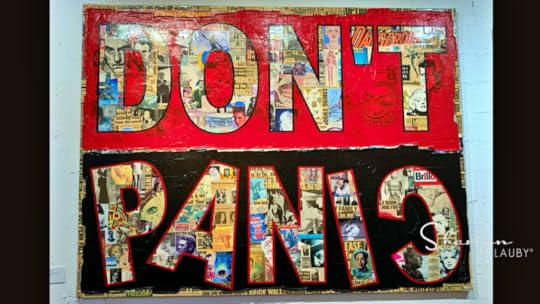
You knew that I would have to do this at some point. But before you close this tab on your browser, I hope you read on because I’ve put together something a little different when it comes to handling COVID-19 (also known as the coronavirus).
I don’t want to spend a lot of time sharing articles about
outbreaks, sanitizers, and masks. You probably already have those sites
bookmarked. If you don’t, here’s a couple to get you started.
A Facebook friend shared this
article from Juliana Grant, a medical epidemiologist with almost 20 years of
experience in public health. It’s
an email she wrote to family and friends about the coronavirus and later
decided to share it on her blog. I like her ability to convey very serious
information in a casual writing style.
The Centers for Disease
Control and Prevention (CDC) has extensive information on the virus
including how it spreads, risk assessments, and travel information.
This article from Harvard Business
Review answers “8
Questions Employers Should Ask about Coronavirus”.
The Society for Human Resource
Management (SHRM) has a FAQ
about the coronavirus, including information about the Family and Medical
Leave Act (FMLA), workers’ compensation, and the Americans with Disabilities
Act ADA).
And this last one might sound a bit
unconventional, but The Disney Food Blog published a nice read about visiting
the theme parks. I know public events are a concern right now, so this
article might provide a few insights.
The information I wanted to share with you today has to do
with some of the workplace challenges business leaders are facing as a result
of the coronavirus. For example, employees might be requesting flexible work. I
published an article last year about the
different types of flexible work options that are available for caregivers,
but it might work under these circumstances as well.
Many organizations are allowing employees to work from home.
And that’s terrific! But working from home isn’t the same as working in an
office. And employees might need some guidance on how
to work from home successfully.
Managers also need some guidance on managing a virtual
workforce. It’s certainly not impossible to do but it is different.
Encourage managers to find
time to create an engaging moment for an employee. It will strengthen the
relationship and let employees know that the company cares about them.
I’d like to think that everyone understands that
organizations are simply reacting to the information they have available. But
that doesn’t mean we can’t make our employees feel like we have a plan in place
to disseminate information and options when it comes to getting the work done.
One last thing, if your organization doesn’t have any kind of emergency plan in place, use this as an opportunity to get one. I’m watching the news – just like you are – and many people are referencing the 2009 H1N1 virus (remember that one?!) My point is this, at some point in the future, there will be another situation. We just don’t know what it will be called and when it will happen. Find time to do a debrief and put a plan together for the future. I honestly hope you never have to use it. Our employees right now are looking for our leadership. They want to know that we can handle the unexpected. They want answers to their questions. While we might not know what’s happening with the virus, we do know how to run the business.
Image captured by Sharlyn Lauby at the Peter Tunney art exhibit at Wynwood Walls in Miami, FL
The post Bookmark This! The #Coronavirus Edition for #HR appeared first on hr bartender.






March 3, 2020
Talent Acquisition: 3 Learning Activities that Can Benefit Your Strategy

(Editor’s Note: Today’s article is brought to you by our friends at
Criteria Corp, a leading provider of pre-employment testing services. If
you want to learn more about how pre-employment testing can benefit
your talent acquisition strategy, check out Criteria Corp’s “Definitive
Guide to Pre-Employment Testing”. I’ve found it to be a
comprehensive guide that I keep on the corner of my desk all the time.
Enjoy!)
I’m confident that you know recruiting in today’s business environment is hard. Unemployment is at a 50-year low and we continue to have more job openings than job seekers. So it won’t come as a surprise that we need to adapt our talent acquisition strategy to effectively deal with these challenges.
I’ve written about the buy, build, borrow model a few times. In the past, organizations have really
focused on the “buy” component of the model, which is hiring candidates from
the outside. What’s interesting to see is how more organizations are starting
to address their external recruiting challenges
by using the “build” component of the model, which is developing
current employees.
The build component is typically focused on developing employee skills. This is important because there’s a skills gap that needs to be addressed. According to the Association for Talent Development (ATD), more than 80% of organizations feel that they are facing a skills gap and they will continue to do so. Skill development addresses both the skills gap and the candidate shortage. And since the statistics suggest that this situation isn’t changing anytime soon, it only makes sense for organizations to include learning and development in their talent acquisition strategy. There are three types of learning activities that organizations can use to develop employee skills:
Skilling is teaching an employee the skills they need for the job they have today. Let’s say Cecil is a new security officer in the organization. In order to do his job, he needs to know how to monitor the security cameras. Training him on how the security cameras work would be skilling.
Upskilling is teaching an employee additional skills so they can continue to bring value and contribute to the bottom-line, typically in their current role. An example would be if Jose, who works in HR, wants to get the Society for Human Resource Management (SHRM) Talent Acquisition Specialty Credential. While the credential is a confirmation of proficiency, the process to obtain the credential often adds new skills.
I view upskilling as being a
little different from skilling. Skilling is about having the necessary skills
to do the job. Upskilling is about additional skills to stay relevant and
enhance the job. Which leads us to the third learning activity:
Reskilling is to teach an employee new skills so they can do a different job. A great case study can be found in Harvard Business Review’s article “AT&T’s Talent Overhaul”. It talks about how AT&T managed the transition from being the “phone company” to a “digital organization” and more importantly, how the company created a transition for employees who held the title of telephone operator to new positions in the digital organization.
This could be a new way of
thinking about talent acquisition and learning. In some organizations,
recruiting and learning functions don’t partner in this way. Everyone might
agree that skills development is important, but the responsibilities are
siloed. I’d challenge people to think of skills development as a company-wide
initiative for a couple of reasons.
If organizations want to
accomplish their goals, they need employees who can do the work. If there are
skills gaps, then the organization either needs to find the talent on the
outside or develop people from within. Maybe even a bit of both.
In addition, if organizations
want to grow (whether that’s in size or in revenue) then they need employees
who are going to help them get to the next level. That means skill development
and skill enhancement.
These two things – having the
right talent for today and developing the right talent for the future – helps
the organization adapt to the changing needs of customers and the business
environment. That isn’t a recruiting responsibility or a learning responsibility.
It’s an “everybody” responsibility.
There’s one more reason for
organizations to focus on skill development as part of their talent acquisition
strategy. It allows organizations to become more adaptable. I ran across an another
article in Harvard Business Review that talked about fit versus adaptability
and that adaptability might be a better
indicator of performance than cultural fit. It
got me thinking. Adaptability means that individuals must be able to learn as
things change over time. That means employees must be not only be trainable for
the job they hold today but capable of upskilling and reskilling for future
opportunities.
I realize that organizations
cannot abandon their buy strategy. Sometimes we need to recruit from the
outside. But to make sure that employees are able to adapt, organizations
should consider making “trainability” a quality they want to explore during the
recruiting process. Ask some behavioral based interview questions about
self-learning. Also consider using cognitive aptitude assessments to measure
trainability. This dual approach could help the organization hire people today
that will be skilled for future opportunities.
If you want to learn more about adaptability
and how to add skilling, upskilling, and reskilling into your existing talent acquisition
and development programs, join me and the Criteria Corp team for a webinar on “Using
Talent Pools as the Foundation of Your Talent Strategy” on Tuesday, March 17 at 10a Pacific / 1p Eastern. We
look forward to seeing you there!
The post Talent Acquisition: 3 Learning Activities that Can Benefit Your Strategy appeared first on hr bartender.






Sharlyn J. Lauby's Blog
- Sharlyn J. Lauby's profile
- 10 followers



